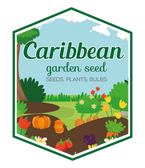
Crimson Clover or Italian Clover Seeds,
- Get free shipping to lower 48 states on orders $54.95+ (Most Items), excluding live plants, plant bulbs, and black plastic nursery crate.
- Most orders are processed by the next day
- Select your desired size and/or color from the available options.
Clover Seeds

Crimson Clover
Product ID: 982
An upright, winter annual legume.
Crimson Clover Dixie (Trifolium Incarnatum) - A winter annual, crimson clover is grown from bulk clover seeds from the Gulf Coast region to Southern Ohio clear to the West Coast. It is tolerant of medium soil acidity and will grow readily on both sandy and clay type soils. It is an important winter annual forage in the south, with growth continuing through the winter with the amount influenced by temperature. Crimson clover thrives in mixture with grasses, provides excellent winter grazing, makes good hay. It is high in nutritive value when harvested for forage in the pre-bloom stage. Flower heads are long, crimson, and very showy. Crimson clover seeds and annual ryegrass make an excellent cover crop mixture for improving the texture, organic matter and tilth of soil.
Inoculated Seed - We now offer crimson clover seed that has been coated with an inoculant for better establishment. NITRO-COAT® rhizobium strains are specifically chosen for each seed type. A key to any successful establishment and early seed development is moisture. NITRO-COAT® is naturally water absorbent and helps attract soil moisture to the seed, getting your stand established quickly. This coating process which Outsidepride utilizes, assures that only the top-performing and crop-specific rhizobia will be applied to ensure your clovers reach maximum nodulation, stand establishment, and yield potential. The weight of the clover seeds will contain approximately 34% coating material that contains the inoculant and water holding material for better establishment and viability of the seed. There is no difference in the seeding rates between the coated and raw seed due to the increased germination and viability of the bulk clover seeds that are coated and inoculated.
| Sowing Season | Seeding Depth | Seeding Rate (1,000 Sq. Ft.) | Seeding Rate (1 Acre) | |
| Alfalfa |
Spring & Summer | 1/4 - 1/2" | 1/2 lbs. | 15-25 lbs. |
| Clover, Red | Anytime | 1/4 - 1/2" | 1/2 lbs. | 25-30 lbs. |
| Clover, Sweet | Spring & Summer | 1/4 - 1/2" | 1/2 lb. | 25-30 lbs. |
| Clover, White | Spring & Summer | 1/4 - 1/2" | 1/4 lb. | 5-15 lbs. |
| Cowpeas | Spring & Summer | 1 - 1/2" | 2 lbs. | 75 - 125 lbs. |
| Peas, Field | Spring or Fall | 1 1/2 - 3" | 3 lbs. | 100-150 lbs. |
| Soybeans | Spring to Summer | 1" | 4 lbs. | 150-175 lbs. |
| Vetch, Hairy | Anytime | 1/2 - 1 1/2" | 1 lb. | 25-50 lbs. |
Fertility
The most important investment in a fertility program is a soil test, which will indicate soil needs with regard to pH, phosphorus, and potassium. White dutch clover yields better and stands last longer when grown on soils with a medium level of phosphorus and potassium. A pH of 6.0 - 6.5 is usually recommended for excellent yields and stand persistence. In some states, minor elements may also be recommended.
Fertilization with nitrogen is not recommended when seeding white clover seeds into grass. Nitrogen will stimulate the grass, thus providing more competition for the white clover seedlings during establishment. This becomes even more of a problem when seeding white clover into established grass pastures. Increased grass competition from added nitrogen can result in death of white clover seedlings. In most states, application of nitrogen to established clover/grass mixtures is not recommended if white clover occupies 20% or more of the ground cover.
Seeding Rate
Seeding rates vary with geographic location, seeding method, and seeding mixture. In general, rates 1/4 - 1/2 lb per 1000 square feet or 8 to 10 lbs per acre are recommended.
Seeding Depth
The ideal seeding depth for clover seeds is approximately 1/4-inch maximum, but under favorable weather and soil conditions, clover seed present on the soil surface may germinate and become established. Good seed-soil contact is important to ensure rapid germination and emergence.
Seeding Time
In the Southern USA, white clover is seeded in late winter or early spring and in late summer. In the Northern USA, most white dutch clover is seeded in early spring or late summer.
Seeding Method
White dutch clover can be seeded by many no-till or minimum till techniques and by broadcast seeding. In conventional seedbeds, white clover is almost always seeded with a perennial grass for lawns or hard or sheeps fescue for erosion control. Just scatter the seeds, rake lightly, and keep the clover seeds moist until it sprouts! After sprouting occurs, cut back watering as root development starts taking place and less water is needed. Withstands mild drought, grows well all over the U.S., even on barren soil where nothing else wants to grow. Winter hardy and it stays so low you can just till it under in spring if you are using it for a cover crop.
Weeds
The best weed control is provided by a vigorous white clover-grass stand. If necessary, white clover-grass stands can be mowed to remove grass leaves and seedheads and to suppress broadleaf weeds and woody vegetation.
LET OUR CUSTOMER SPEAK FOR US

![[Seeds] - Caribbeangardenseed](http://caribbeangardenseed.com/cdn/shop/files/gift-card-gift-card-1_1024x1024_dfa857db-9150-4315-a362-7f0bb3fb9c47_60x28.png?v=1722895789)








